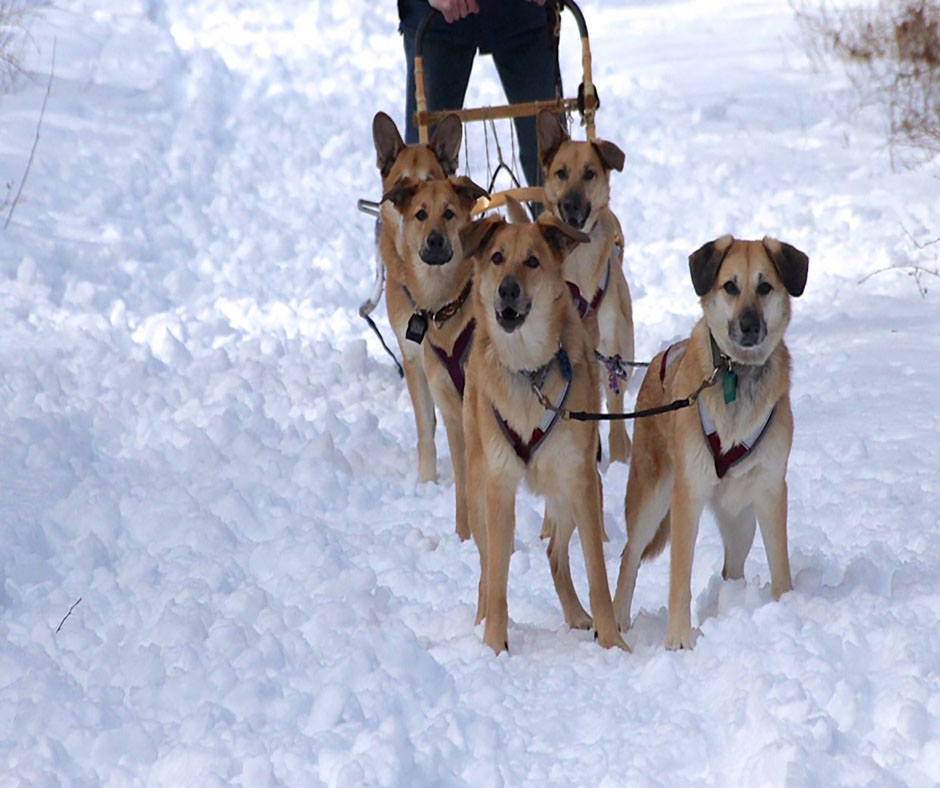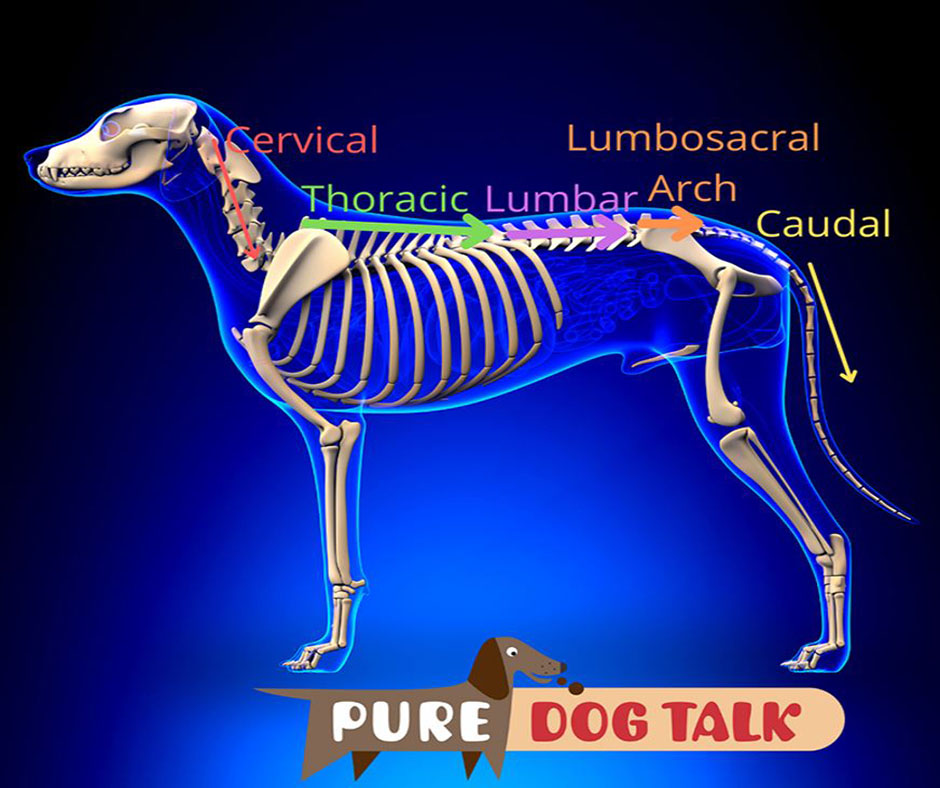Posts by Laura Reeves
527 – Pre-Breeding Veterinary Exams and Why They Matter
Pre-Breeding Veterinary Exams and Why They Matter
Dr. Marty Greer, DVM joins host Laura Reeves to discuss pre-breeding veterinary exams for female dogs and why they matter. Among the important clinical observations may be vaginal strictures.
“I think stricture kind of lumps together a couple of different disorders that probably shouldn’t really be categorized together,” Greer said. “But we don’t know where else to put them. So, a stricture is, by definition, the inability of the vaginal vault or vaginal opening to stretch adequately to allow either a natural mating with a tie and a penis or the vaginal delivery of puppies.
“So what does that really mean? That means that when we do a vaginal exam, for whatever reason the normal amount of space isn’t there. It can be that the lips of the vulva, the skin part are really tight and you just can’t adequately get them to stretch. It can mean that there’s a circumferentially stricture meaning all the way around, it’s just not stretchy enough once you get into the vaginal vault. It can mean that there is a column of tissue, a septum, down the middle, usually it runs from top to bottom, so we can reach in sometimes and feel these when we’re doing our pre breeding exams.
“If you do find one, you may decide that you’re not going to do the breeding at that point. You may see if it’s something that’s surgically correctable. Some of them are and frankly some of them aren’t and until you’re in that situation it can be really hard to know. Then we have to make a decision, do we put the semen in? Do we plan a C-section? Do we see what’s going to happen…”
Greer noted that brucellosis tests are currently being sent to outside diagnostic labs, so results are taking much longer to return. Regular testing of breeding animals should take place at least every 6 months, she added.
Listen in for Greer’s recommendations about additional complications that may hinder natural matings, including size mismatches, lack of libido or pain in the stud dog and poor ovulation timing.
526 – Chinook: The Gentleman’s Carriage Horse of Sled Dogs
Chinook: The Gentleman’s Carriage Horse of Sled Dogs
 Rare Breeds Month continues today at Pure Dog Talk. Our final conversation is with Karen Hinchy and Ginger Corley about the Chinook, the Gentleman’s Carriage Horse of Sled Dogs.
Rare Breeds Month continues today at Pure Dog Talk. Our final conversation is with Karen Hinchy and Ginger Corley about the Chinook, the Gentleman’s Carriage Horse of Sled Dogs.
Corley, one of the longest-term Chinook breeders in the US today, acquired her first in the 1980s.
“I wanted a dog that was large but not bigger than me,” Corley said. “I wanted a dog that was friendly. I wanted a dog that didn’t require a lot of grooming. Eventually, I kept narrowing down the list and came to Chinooks without really grasping how rare they were at the time.
“It was designed to be a mid-level dog … it fills the niche between the smaller, racier Siberian and the large freighting Alaskan Malamute. The Chinook is the gentleman’s carriage horse of sled dogs. It may not be as fast as the Alaskan Husky, which is the racing machine that is on your Iditarod teams. Those dogs are much smaller than your average Chinook. It’s not going to be the huge freighting dog that the Alaskan Malamute and some of the other indigenous freighting breeds of the northern extremes were.
“But it can go for a reasonably long distance at a darn good clip carrying a relatively heavy load. Plus it is the sled dog you can live with. They don’t want to run away from home like your average Siberian. And they have very little urge to fight with other dogs. A lot of us will own multiples.
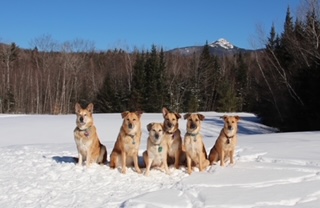
“They were developed in the New England area by Arthur Walden, a gentleman who had been up in Alaska during the Yukon gold rush. He had worked as what was known as a dog puncher back then. He was delivering supplies and mail to the prospectors that were looking for gold. His favorite dog while he was up there was one he called Chinook.
“Eventually he decides to breed his ultimate sled dog. They were a unique look of their own. They were a big yellowish, what we now call tawny or might be considered fawn, sled dog. Their coat rather than standing off from the body like you see in a show Husky or Malamute, it’s more of a short-coated Saint Bernard type, where it lies flatter to the body, but there is a substantial undercoat. There were three in the initial litter and they turned out to be just magnificent sled dogs. And from there, things took off.”
“The Chinook is the state dog New Hampshire,” Hinchy noted. “I think there are only a few States and dog breeds that we have where American breeds are recognized as official state dog, so we’re pretty proud of that. The actual dog Chinook, and his progeny, were a large number of the dogs that competed in the first races in the New England sled dog club, which is a pretty famous group up here. This is before Leonard Seppala and some of the Siberians arrived and took over the speed scene.
“The interesting thing about Chinooks is Arthur Walden sort of created them and stewarded their future and their breeding for the first 10 years (in the 1920s). Then he went off to Antarctica and when he came back, ultimately the breed ended up passing through one person at a time as the main breeder. All the way through the ‘70s there was generally one single breeder in the country that controlled the breeding of Chinooks. As a result, of course, it kept the numbers low and the breed very rare.
“In 1965, Chinooks were listed in the Guinness Book of world records as the rarest dog in the world, with 125 alive. Fast forward to just before Ginger stepped onto the scene, we know there were eleven intact Chinooks anywhere in 1981. There are still only about 1,100 chinooks in the world.”
Listen to the full episode to hear more fascinating details about saving and growing the population of this rare breed, the cross-breeding that was done to salvage them, and their unique characteristics in the working group.
Breeders Voice: Dog News: 10 Questions asked of Laura Reeves | Pure Dog Talk
Shout out to my friends at Dog News! One of the fun features in a GREAT Dog Show magazine.
Read Full Post525 – Nederlandse Kooikerhondje: The Original Duck Decoy
Nederlandse Kooikerhondje: The Original Duck Decoy
Marlene Valter and Susanne Martin join host Laura Reeves to share their passion for the Nederlandse Kooikerhondje during Pure Dog Talk’s Rare Breeds Month.
The progenitors of these rare Dutch duck decoy dogs are depicted in paintings dating to the 1600s, Martin noted. Saved from near extinction after World War II, they received full recognition by the American Kennel Club in 2018.
The breed was used to lure ducks into traps in man-made Dutch ponds. Their flashing white tail acts as a decoy. In fact, the word decoy derives from the Dutch name for these water features, Eendenkooi.
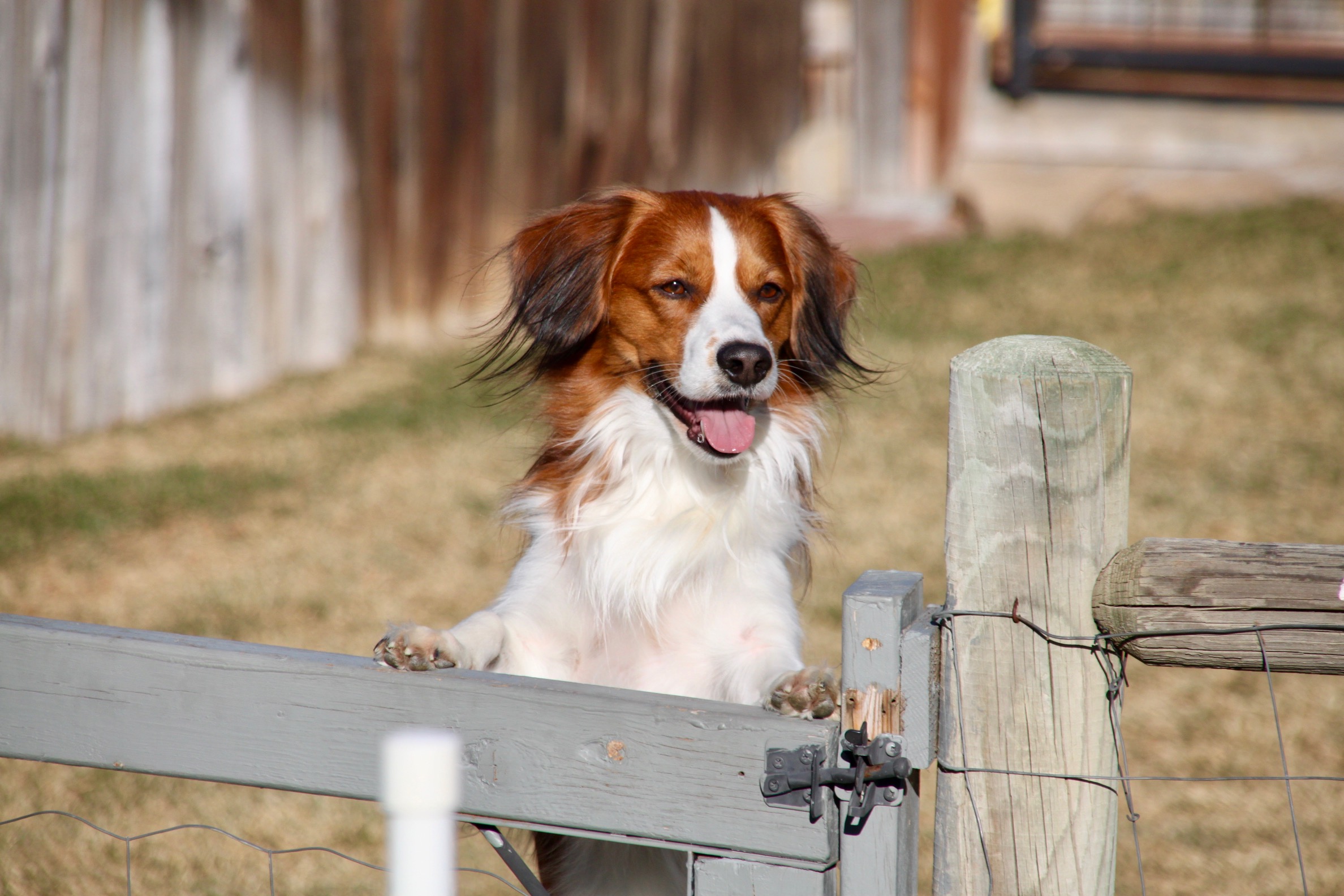 “I fell in love with how pretty they are first of all,” Valter said. “They’re really beautiful and attractive. It’s a double coat, so it’s weatherproof. My dog Harvey, he’ll go out, run around in the mud and you can put him away, sometimes not even showered him off or anything at all, he’s just full of mud. A half hour later, all the mud is on the ground and his coat is completely white.”
“I fell in love with how pretty they are first of all,” Valter said. “They’re really beautiful and attractive. It’s a double coat, so it’s weatherproof. My dog Harvey, he’ll go out, run around in the mud and you can put him away, sometimes not even showered him off or anything at all, he’s just full of mud. A half hour later, all the mud is on the ground and his coat is completely white.”
Hallmarks
Kooiker coloring is very specific, Martin said. They always should have a white blaze and the orange patches. (It was) thought that ducks were most attracted to the orange and white color combination.
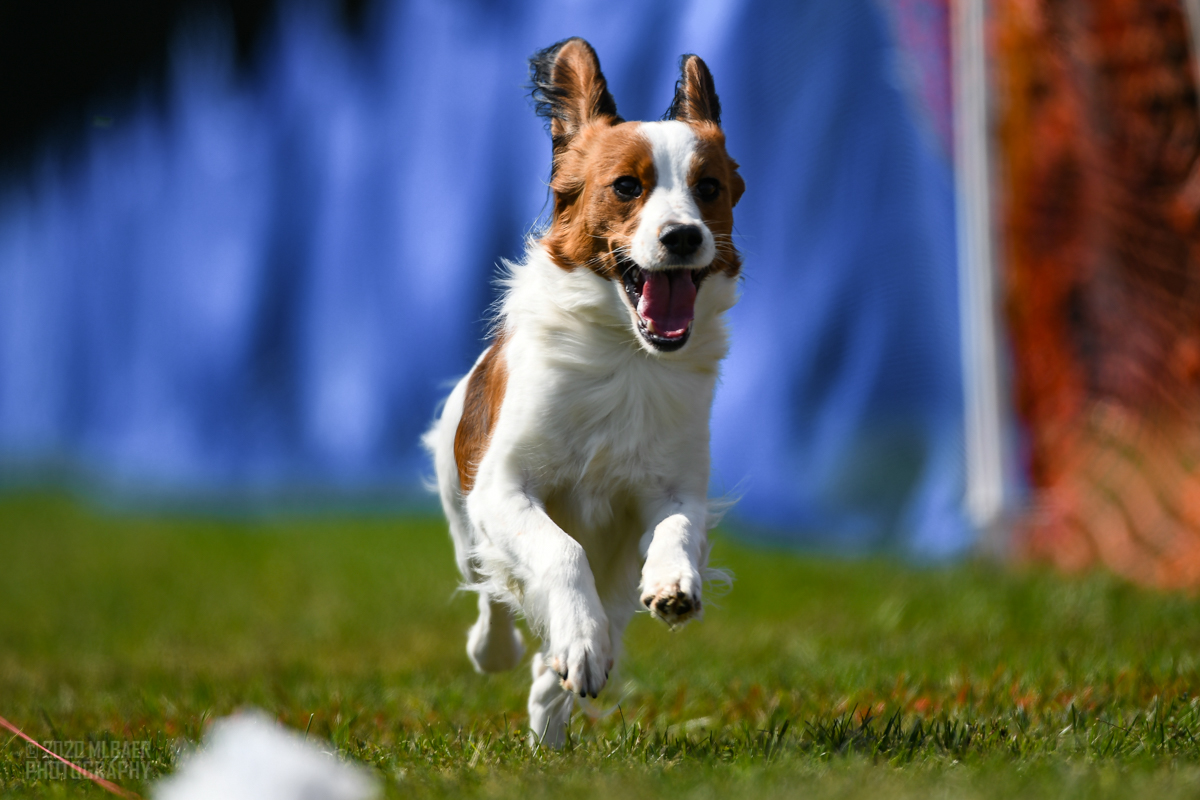 “So, the blaze, it goes to the nose,” Martin said. “The orange covers the eyes and then you have these black earrings which are pretty much the signature, the black eartips, and then the white plumy tail. But the real way that you know at Kooiker, in many respects, is because if you look at the standard it talks about lively, agile, self-confidence and that’s what they are. They prance and step in this very deliberate kind of movement.”
“So, the blaze, it goes to the nose,” Martin said. “The orange covers the eyes and then you have these black earrings which are pretty much the signature, the black eartips, and then the white plumy tail. But the real way that you know at Kooiker, in many respects, is because if you look at the standard it talks about lively, agile, self-confidence and that’s what they are. They prance and step in this very deliberate kind of movement.”
Temperament
“There’s a 30 second rule with Kooikers,” Valter said. “You meet them and you give them 30 seconds to just think about it. Then, when they come to you, you pretty much got a friend. They’re just a discerning group. They’re watching whether I’m accepting this person. If I do, they tend to. If I’m being aloof, they tend to be also. They’re very kind of quick. One of the most unique things about them, in my mind, is that they’re puzzle solvers. So almost the more complicated the situation, the more interested they are.”
Summary

Susanne Martin works Search and Rescue with her Kooikers.
The Kooiker is a “dainty, pretty, sensitive, active and versatile dog with low maintenance that needs a very special owner with the right intuition,” Martin said.
“I’ll share a story of my experience,” Valter said. “So, we’re getting ready to go to this show and … we get to the hotel and it has a pond… I need to go take my dog out for a walk. So, he goes out walking, without a leash, and he just starts trotting along and I look up and I see a duck. And then he’s trotting along and I look up a few seconds later and there’s ten ducks. And then he’s moving right along in this very deliberate, quiet movement. I felt like I went back centuries the way he was moving quietly along … I quit counting at 35 ducks within a matter of minutes, (just following him)…”
Be sure to LISTEN to the full episode for more details on this fabulous little sporting dog.
524 – Norrbottenspets: “Your GPS in the woods”
Norrbottenspets: “Your GPS in the woods”
Gabi Vannini, breeder and fancier of Norrbottenspets, joins host Laura Reeves for a Love the Breeds episode during Rare Breeds month at Pure Dog Talk. Currently judged in the Miscellaneous group with AKC, this ancient hunting dog is used to tree game for the hunter.
 “They’ll be in the hound group,” Vannini said. “They’re hound spitz, so they don’t look like every other dog in the hound group necessarily and in Europe they are in the primitive group. They are tree barking hunting dogs, so they’re gonna be kind of like a coonhound as far as barking at things up the trees and then letting you shoot.
“They’ll be in the hound group,” Vannini said. “They’re hound spitz, so they don’t look like every other dog in the hound group necessarily and in Europe they are in the primitive group. They are tree barking hunting dogs, so they’re gonna be kind of like a coonhound as far as barking at things up the trees and then letting you shoot.
“Back before we had GPS collars and fancy things, they were kind of your GPS in the woods because they would go hunting on their own and find something for you and then bark their fool heads off until you found them.”
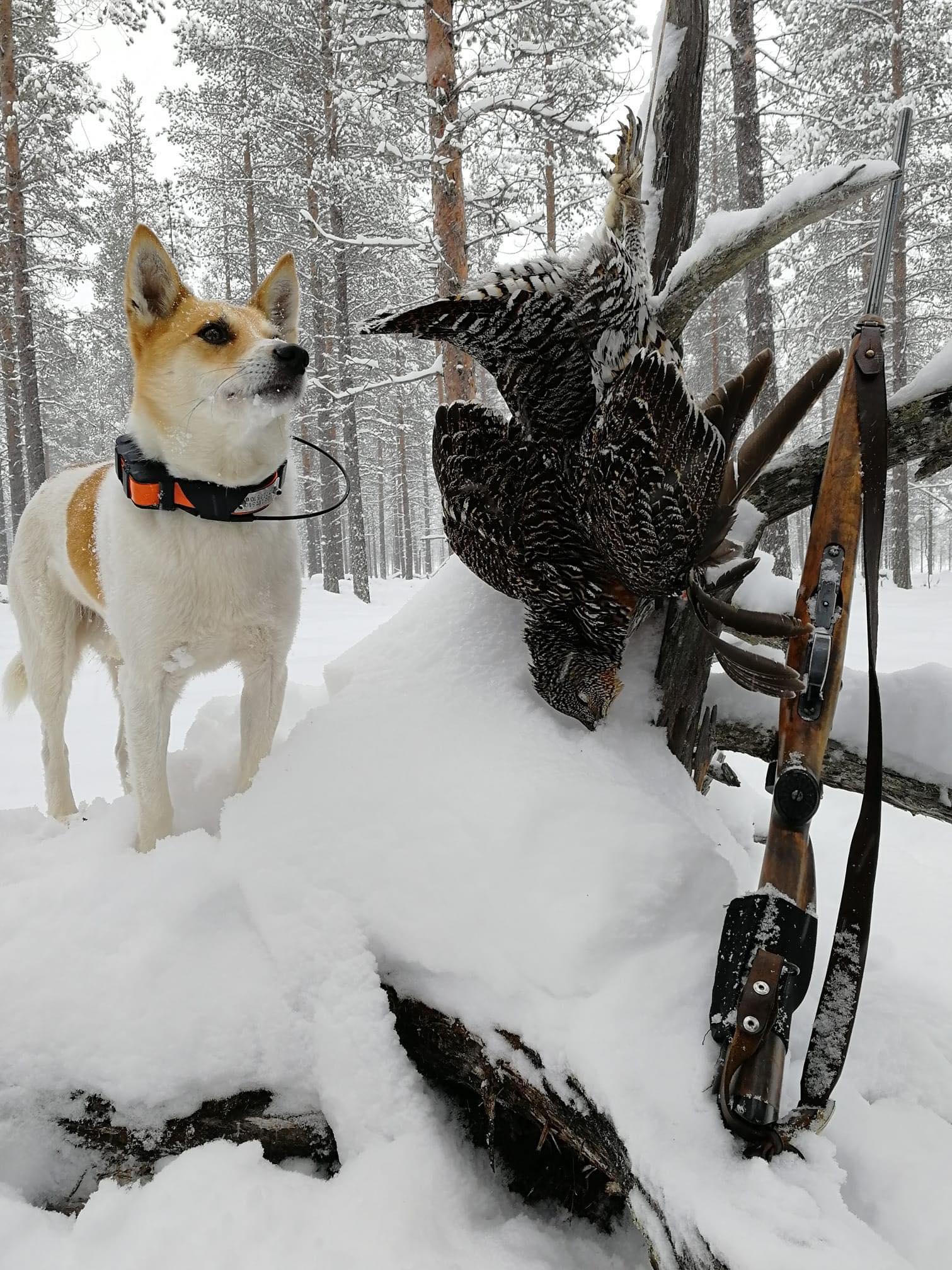 Related to the solid red Finnish Spitz, the Norrbottenspets were the parti colored members of the ancient breed. As breeders selected for the solid color dogs, the spotted dogs dwindled away, Vannini noted, “They actually got really close to being extinct before there was kind of a project made to go out and find some of them.”
Related to the solid red Finnish Spitz, the Norrbottenspets were the parti colored members of the ancient breed. As breeders selected for the solid color dogs, the spotted dogs dwindled away, Vannini noted, “They actually got really close to being extinct before there was kind of a project made to go out and find some of them.”
More popular in their native Sweden and Finland, Vannini estimates there are only about 250 in the US.
“They are really, really nice dogs and honestly a really well-kept secret. I think a little bit of it is the barking stuff. If they’re hunting, they’re working but other than that they’re really not obnoxious or reactive barkers.
“(At 16-18 inches tall), they’re nice little go anywhere dogs. We’ve got a lot of dogs in and out and that’s been one of my big things is having dogs that are very tolerant of that. They’re just really good with other dogs and really sweet with people.
“It’s a double coated breed. Typically, they drop the coat every six months kind of thing, but it’s a nice shorter double coat. We’re actually explicitly not supposed to blow dry them for shows. They shouldn’t be back brushed and fluffed up. The coat should be a tight natural easy coat and that’s something that’s really nice about them and easy to live with.”
Long lived with few genetic health issues, Vannini noted, these hardy little dogs often live well into their teen years. Typical hounds, they require creative training but are not demanding or needing a job.
523 – Special Reproductive Considerations for Rare Breeds
Special Reproductive Considerations for Rare Breeds
Dr. Marty Greer, DVM joins host Laura Reeves to discuss some of the special reproductive considerations for rare breeds. Rare dog breeds offer specific challenges for their breeders including health concerns, limited gene pools, DNA testing mazes and infertility issues.
April is Rare Breeds month here at Pure Dog Talk! Watch for upcoming episodes with deep dives into Norrbottenspets, Chinooks and Nederlandse Kooikerhondje.
“Pick one thing a year that you’re going to try to work through in your breed,” Greer said, quoting from Dr. Ian Dunbar. “Pick what your priorities are. You have to pick. I can’t pick for you. You know your breed. You know your genes. At some point we have to really say this is what I’m going to focus on, this is what I’m going to try to breed for or away from, and try to take those incremental steps. You’re not gonna get it all in one generation.”
How do you eat an elephant…
“I think that’s so important in the rare breed community to emphasize the you eat the elephant one bite at a time,” Reeves added. “It’s really important to recognize that and not get discouraged because you’re trying to swallow a whole elephant. Be committed to that long term process. From a rare breed perspective, that’s one of the things I always emphasize, this is not a fly by night operation. It’s a process, something you’re going to dedicate your entire life to.”
“You work with other people and you’re honest with other people,” Greer emphasized. “So we need to stop hiding things. We need to stop backbiting. We need to stop saying bad things about other people and we need to be really honest with each other and with ourselves so that when you look in the mirror you can say ‘I’m breeding the best dog that I possibly can.’
Full disclosure
“Nobody goes out and deliberately breeds a bad dog but there’s so many aspects to how you have to make these decisions. Without full disclosure you really can’t get there. So we have to be honest with each other. No breeder deliberately produced a dog with a genetic problem, but you’ve got to tell people if you have it because if you double up on it you’re going to have surprises in your litter.
“Longevity, I think, is seriously under-appreciated. I love breeding females that can still have puppies when they’re older. I love breeding old males that still produce sperm. Now that doesn’t mean you can’t freeze semen when he’s young, and you should because then you’ll have access to him, but if he lives to be 16 years old and he was fertile till he was 14, you rock man! That means he didn’t die of orthopedic disease, he didn’t die of bad temperament, he didn’t die because he ran away from home and got hit by a car. He didn’t die from 1,000 things that he could have died from.
Longevity for the win
“Don’t forget about those old guys and their genetics. Go back to the old publications of your breed. Go back to the old pedigrees and take a look and where are those dogs and what are they doing and how long did they live and what was their lifestyle like and what did they die from.”
Greer also strongly recommends purchasing Dr. Jerold Bell, DVM’s book for learning more information on genetic diseases in specific breeds.
522 – EOAD Gene Identified in Rhodesian Ridgebacks
EOAD Gene Identified in Rhodesian Ridgebacks
Adam Boyko, co-founder of Embark, and Rhodesian Ridgeback breeder Denise Flaim join host Laura Reeves to discuss EOAD (Early Onset Adult Deafness) in Ridgebacks and Embark’s discovery of the genetic cause that can identify affected and carrier dogs before the condition develops.
“EOAD is early onset adult deafness,” Flaim said. “It’s a form of deafness that’s not related to color. Many breeds, like dalmatians, the way the white overlays the cochlea impacts deafness. This is just a simple autosomal recessive, inherited the same way brown nose color is. If you have two copies of this recessive gene, if you are a Ridgeback, you become deaf.
“The interesting thing in Ridgebacks is these puppies are born hearing. So if you are a breeder who wants to do your due diligence and BAER test your puppies at 8 weeks, they’ll all hear. What then begins to happen is they start to go progressively deaf. The males quickly, usually by six months are completely deaf and the bitches can take from 12 to 18 plus months.
“(This test) identifies if your dog is a carrier or not. If your dog is a carrier, you simply don’t breed it to another carrier and you’re free and clear. This is a really important point because the tendency among dog breeders, especially those who want to be really, really virtuous and really, really ethical, is to say, ‘oh, I’m going to identify all these carriers and get them out of my breeding program.’ Which is, of course, what you don’t wanna do.
“You certainly don’t want to increase the frequency of this gene in the population, but what you want to do is manage it. The thing is it’s never what you know, it’s always what you don’t know. It’s never what you worry about, it’s always what you don’t worry about. So yes, we’ve got this marker for deafness, but that deafness carrier you’re throwing out of your breeding program may not carry for a really devastating disease for which we don’t have a test. So, like anything, moderation and taking the bigger view is really important.”
Teamwork for the win…
“Project Dog started working with breeders like Denise,” Boyko said, “and recruited a whole bunch of samples and was able to find an associated region. But sequencing of a deaf dog didn’t yield any candidate variants that were causing the mutation. So, you’re sort of stuck in this world, do we want to offer a linkage-based test, which we know probably isn’t going to be 100% accurate, or do we wait until we can find a mutation test. For a while, there was just a linkage test was all that could be offered.
“So, Embark came onto the scene. We, of course, have a large database of dogs, of Ridgebacks and others, and so we were able to recruit more cases, more controls. We were able to verify the association Project Dog found. It’s like ‘yeah, this is definitely on chromosome 18, right here. There had been advances in the genomics. We put some scientists on it …. and sure enough a mutation did find itself. It was in gene EPS 8L2, which was a fantastic gene because it’s also associated with early onset deafness in humans, in recessive forms.”
Hear the REST of the story on today’s episode. Just click play on the bar above.
Adam Boyko
Adam is an associate professor in Biomedical Sciences at the Cornell University College of Veterinary Medicine, focused on the genomic investigation of dogs. Adam’s research has addressed fundamental questions of dog evolution and history, disease and trait mapping, and advancing genomic tools for canine research. Adam has coauthored over 40 peer-reviewed scientific papers, including research in Nature, Science, and the Proceedings of the National Academy of Science and is a member of the Board of Trustees for the Morris Animal Foundation. He is a graduate of the University of Illinois, Urbana-Champaign and received an MS in Computer Science and a PhD in Biology from Purdue University before his postdoctoral work at Cornell and Stanford.
Denise Flaim
Denise is a professional journalist, author and former Newsday staff writer and columnist who is lucky enough to write about the thing that she loves — dogs!
In 2015, Denise founded Revodana Publishing, which focuses on dog books written by experts and fanciers with a deep and time-forged understanding of their subject matter.
Denise is a member in good standing of the Rhodesian Ridgeback Club of the United States (www.RRCUS.org) and the Western Hound Association of Southern California, and is a board member of the Morris & Essex Kennel Club (www.morrisandessexkennelclub.org).
The long-time Ridgeback breed columnist for the AKC Gazette, she is the past chair and historian of the RRCUS Health & Genetics Committee, and now serves as a member of the Rhodesian Ridgeback World Congress Health Committee (www.worldridgebackhealth.org).
521 – Competing in Subjective Sports: Dog Shows vs the Olympics
Competing in Subjective Sports: Dog Shows vs the Olympics
Amanda Kelly is back with host Laura Reeves to look at dog shows, which as we all know are an incredibly subjective sport, through the eyes and the lens of the subjective sports that we watch in the Olympics. This first of a two-part conversation examines the topics of “substances” and “subjectivity.”
Substances
“I think of substances from a dog show point of view, I think it’s maybe not a whole lot different than from an Olympic point of view,” Amanda said. “Maybe the type of substances differs, but the underlying issue is the same. So we talk a lot in the dog show world about foreign substances and in the sports world in general cheating and drug use always comes up. It doesn’t matter what sport it is, there is always some way to cheat.”
“There’s some shading, right?” Laura asked. “There’s the cheating (that ranges) from ‘I put in an extra nuticle in my dog’s scrotum because he only had one, to I put some white chalk in my dog after it was muddy.’ So there’s a range here.”
“So, it’s always an interesting thing when you kind of take yourself out of something,” Amanda noted. “We take ourselves away from the dog show world and we look at an example in another context and then come back and reapply it, what a different perspective that you can get.
“What I think of when I look at this whole idea of substances and cheating at the Olympics and then I turn from that and I look at the dog world, I think I see maybe from a more Bird’s Eye view the scale and how we’ve normalized things that are on one end of the scale. So, for example, I don’t think any of us would blink at chalking a dog, putting hairspray in its hair, any one of a number of things. A little bit of chalk to cover up that scar or the white bit on its nail or a nose kit to darken in a nose. What about a hair switch in a poodle? So, these are things that I think that we have normalized.
“I think that all of us will, in a conversation, say there are things that are absolutely wrong and lines that we absolutely will not cross. Having that conversation with yourself early on and then sticking with it is important. It can be very difficult. I think what we can do here, in this conversation, is just put it in front of people that everybody is going to have their own line.”
Subjectivity
“One of the things that I read was that in the aftermath of having changed their judging system (for Olympic Figure Skating in 2002), what they observed was that in the elements of scoring that had a subjective element, so a more subjective element say the artistic aspect, there was an observer bias that they noted. They could replicate it across many competitions and it indicated that that observer bias determines about 20% of the mark given by a judge.
“This isn’t my bias that I like such and such a person or I like such and such a dog. It might be a bias like an unconscious bias that I like black poodles more than I like white poodles, or I like this trim more than that trim, or I like a dog presented in a certain way or I prefer this particular head style or those sorts of things.
“When we ask a (dog show) judge to interpret words like ‘slightly’ or ‘moderately,’ where is the clarity as a reference for them? To me it’s a compounding issue because we’re asking them to interpret things that we don’t always equip them to do and on top of that they also have their own personal bias that comes into play.”
Listen in for more of this absolutely fascinating and enlightening conversation. And check back for the “rest of the story” when we talk about sportsmanship and courage.
520 – Talking Toplines with Stephanie Seabrook Hedgepath
Talking Toplines with Stephanie Seabrook Hedgepath
AKC judge and Pembroke Welsh Corgi breeder Stephanie Seabrook Hedgepath is back talking toplines with host Laura Reeves. The topline, specifically, is the entire spinal column, from the tip of the occiput to the tip of the tail.
“A lot of people confuse the term back line with the term topline,” Hedgepath noted. “The back line is basically what you may consider to be the back of the dog, like the withers to the set on of the tail. But the topline starts behind the ears, right at that bump, which is called the occiput, on the skull and then it just goes all the way down. It’s like a suspension bridge. It goes all the way down, all the way back and all the way down the tail. It’s like the links in a chain and it’s not a rigid thing.
Neck
“In mammals there are seven cervical vertebrae. The interesting thing is that one way dogs can differ from dog to dog is in length of neck. When you stop and think about it, they all have the same length of neck, it’s cervical vertebrae, there are seven of them. Even a giraffe has seven cervical vertebrae.
“The difference is the size of the vertebrae. A lot of us look at a dog and you see his profile and you think ‘gosh he’s got a short, stuffy neck.’ No, he’s got the same seven vertebrae as all the other dogs in his class, but because of the positioning of the scapula, if a dog has an upright scapula, it’ll cover that up. So yes, they’ve all got the same length of neck, but it is manifested in different ways because of the rest of the structure of the dog.
Back
“There are many different functions of the spinal column. One of the most important, in the thoracic, is the ribs fit in the spine, go down and join the sternum at the bottom and make a solid piece. So then we have all these thoracic vertebrae and the ribs fit into those vertebrae and that requires a lot of muscling. The only way that front assembly is held onto the dog at all is through muscles and ligaments.
Loin
“The loin area (lumbar vertebrae) is the only part of the dog where the internal organs are not protected by this outer armor of the ribbing. A dog is very vulnerable in that area. The dog with a really long loin is one who’s more prone to injury.
Croup
“One of my favorite connections in the dog, when we’re talking about hold everything together, is what they call that lumbosacral arch. Where the lumbar vertebrae come into the sacrum, which is the bones there in the pelvis. The last three vertebrae before you hit the caudal, in other words the tail, they’re fused. It’s the only three and they’re fused. That’s because a whole lot of energy is going to be pushed all the way through up to the front of the dog when he’s running.”
Listen above to the entire episode for more fabulous insights about our dogs’ structure and how it impacts their performance.
519 – Spinal Cord Injuries and Diseases on Veterinary Voice
Spinal Cord Injuries and Diseases on Veterinary Voice
Dr. Dan Griffiths, DVM, joins his wife Dr. Marty Greer, DVM to discuss trauma and diseases of the spine in this month’s Veterinary Voice.
“As far as spinal injuries or spinal conditions go in dogs,” Griffiths said, “I kind of look at it as there’s about three or four things that can cause it. One is trauma, as you’ve been saying. It can be from hit by car, can come from a dog-on-dog type thing where they run into each other, it can be a running dog falling into a hole. Those are all trauma incidences.
“Dogs with spinal injuries and/or conditions can also come from a congenital situation. The poster child for those is dachshunds, where they have disc compressions that just happen spontaneously, usually not related to trauma but are prone to it due to their genetics. And then we also get into other things that can be in the spinal cord such as tumors of the spinal cord. You can look at degenerative spinal diseases such as degenerative myelopathy, which we’re very familiar with in our corgis and German Shepherds and Chesapeake Bay Retrievers. So there’s a number of things that all fit into spinal cord mishaps. Surprisingly enough there is a condition called FCE which is … actually a blood clot that causes paralysis because of getting caught in the spinal cord. We call it a stroke of the spinal cord.
“Trauma is probably second (most common) on the list as far as spinal cord problems. The number one cause is the achondroplastic breeds like Dachshunds, where they have a congenital propensity to hardened disks and the disks exploding up and expanding up into the spinal cord causing partial paralysis or full paralysis.
Discussing the use of DNA testing for IVDD, Greer offered a note of caution about how we use those results in a breeding program.
“Like all DNA tests, I tend to be a little skeptical of the accuracy the application, how we use that information, but it’s out there. It’s something worth discussing, but be careful what you use it for,” Greer said.
Treatment
“Treatments can go anywhere from strict cage rest,” Griffiths said “and using a non-steroidal anti-inflammatory drug or a steroid drug to takedown inflammation of the disks to laser therapy. We use a lot of cold laser therapy on those situations. We use some other drugs such as gabapentin to decrease nerve pain. If it’s severe enough where the patient is actually paralyzed or has no use of its rear limbs, surgery is indicated.
“Most general practitioners aren’t doing back surgery, you’re looking at a neurologist to do back surgery or a very competent general surgeon, and also they have the capability of having MRI’s or CAT scans available to diagnose and locate the bad disks. A flat film or a plain X-ray may give you some indication of a collapsed disk space where the vertebrae are closer together than what they should be. But the gold standard for these is MRI’s or CAT scans where you can actually see compression of the spinal cord with the disc material at that time. That’s what the surgeons are requiring now is to identify where the lesion is.
Spinal joints
“Between each vertebra there’s about 8 joints. They’re called facets. That’s where they articulate between the two vertebrae. We do see a lot of damage to those in trauma. We also see arthritis in those due to aging. We see a condition called Spondylosis, where we have calcium bridging of those joints. So, arthritis in the spine is pretty devastating in older patients. They can have arthritis in their spine and do pretty well with it but if they have any type of trauma like falling down the stairs, being rolled by another dog those type of thing, it upsets all that arthritis in there and then you can see some pretty acute pain.
“The whole goal of our crate rest and our anti inflammatories is to have that joint somewhat back to normal. Now most of these joints, if they are injured, our best case scenario is that they stabilize. But now that they’ve been injured, they also lend themselves very easily to arthritis in the coming months and or years after an injury.”
Listen in for more insight from two great veterinarians on degenerative myelopathy, Wobbler’s Disease and much more.


